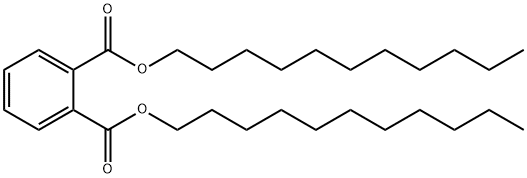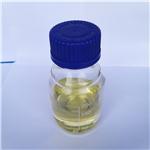Chemical Properties
Pale Yellow Oil
Uses
Diundecyl Phthalate is a phthalate diester and has been investigated for its toxicology in male rats for risk assessment.
Production Methods
DUP is manufactured by the reaction of phthalic anhydride
with undecanol in the presence of an acid catalyst.
General Description
Oily colorless odorless liquid. Less dense than water.
Air & Water Reactions
Insoluble in water.
Reactivity Profile
Diundecyl phthalate reacts with acids to liberate heat along with alcohols and acids. Strong oxidizing acids may cause a vigorous reaction that is sufficiently exothermic to ignite the reaction products. Heat is also generated by interaction with caustic solutions. Flammable hydrogen is generated by mixing with alkali metals and hydrides. Can generate electrostatic charges [Handling Chemicals Safely, 1980. p. 250].
Health Hazard
Produces no ill effects at normal temperatures but may give off irritating vapor at high temperature.
Fire Hazard
Diundecyl phthalate is probably combustible.
Flammability and Explosibility
Not classified
Biological Activity
Chromatin licensing and DNA replication factor 1/Cdc10-dependent transcript 1 (CDT1) is involved in minichromosome maintenance (MCM) loading at the G1 phase of the cell cycle. It plays a key role in origin licensing in eukaryotic cells. It is a DNA replication protein th at stimulates the production of pre-replicative complexes and replication in the next cell cycle by accumulating at the end of the cell cycle. The CDT1 gene mutation can cause Meier–Gorlin syndrome, a type of primordial dwarfism.




